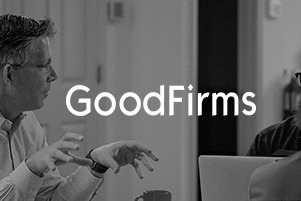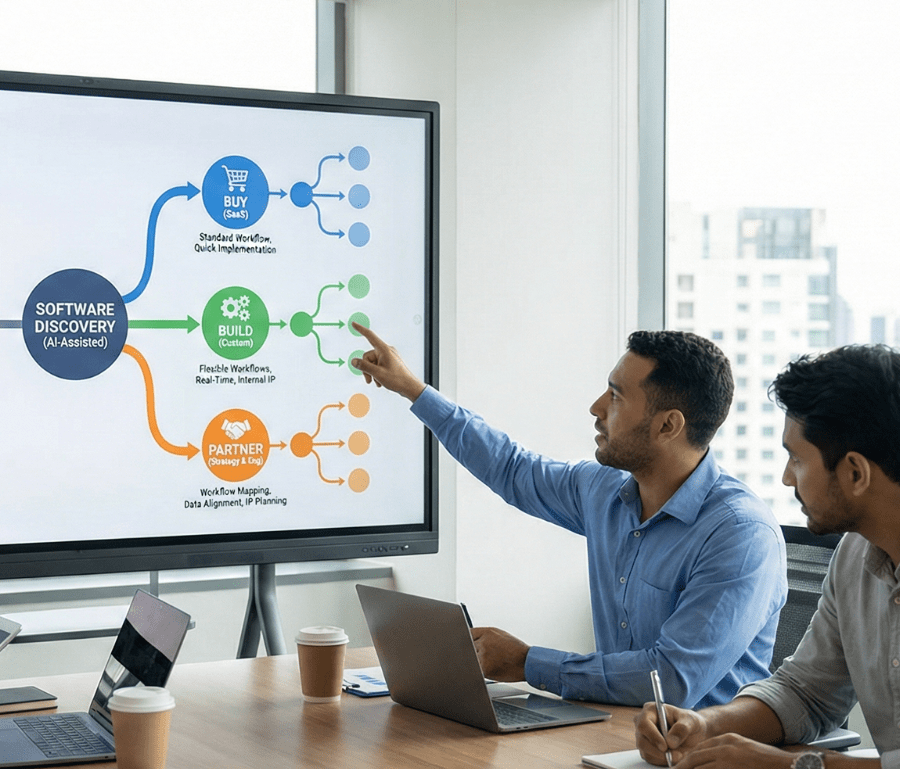GoodFirms, as part of its exclusive CEO Interview Series, interviewed our CEO, Bob Klein, for insights into what makes a successful software development company. To learn more about the story behind the legend and how Digital Scientists strives to fully collaborate with our clients, read below.
Kindly share your feedback on how GoodFirms has been doing so far in increasing your visibility among potential clients.
Goodfirms has increased our visibility to companies searching for a team of experts to help build new products and platforms with a differentiated user experience.
Please introduce your company and give a brief summary about your role within the organization.
I am CEO and cofounder of Digital Scientists, an experience lab that helps clients accelerate their innovation efforts with a focus on business growth. I work with our product management, product design and development teams to support client engagements. We are a digital software services firm with a broad skill set for the design and build of complex digital experiences. We are an experience lab for hire.
What is the story behind starting this company?
My identical twin brother and I started Digital Scientists as a digital marketing firm in 2007. He came from a marketing background, and I came from an enterprise technology background. We quickly discovered that we were happiest being “makers”– designing and building new digital products and platforms.
We have always believed that a cross-functional team of designers, product managers and developers should work closely together to make the best product experience.
What is your company’s business model? In-house team or third-party vendors/outsourcing?
We design everything we build and only build things that we design. Our entire team is onshore and inhouse. We believe in the power of small, experienced teams working together with clients to build exceptional products and experiences. We don’t believe that innovation can be outsourced.
How does your company differentiate itself from the competition?
We believe that technology products need to solve fundamental user problems, so it is important to first understand the user’s needs, or jobs-to-be-done (JTBD), before starting any new product. We start with user research and believe in iterative product design and development with ongoing user validation. This approach is the key way to accelerate the innovation process while reducing risk at the same time. We are differentiated by our broad experience building a range of new products and experiences: mobile, desktop, IoT, AI, etc. We don’t build websites.
What industries do you generally cater to? Are your customers repetitive? If yes, what ratio of clients has been repetitive to you?
We don’t necessarily cater to any specific industry, but have touched many over the years. Our preference is to build a collaborative and lasting client partnership. Larger clients might work with us as their R&D or innovation team while smaller companies or startups lean on us to help them get their new product or platform launched to the market.
Please share some of the services that you offer for which clients approach you most often?
We typically work with product leaders (e.g., chief product officers, VPs of user experience, VPs of data science, etc.) in the following areas to quickly show our ability to make an impact.
These are the best ways to get started with Digital Scientists:
- Remote Design Sprints – Test your next big idea fast
- Minimum Viable Products – Launch a product in 3 months and run your market test
- Minimum Viable Models (AI & Machine Learning) – Define & test a machine learning model
What is your customer satisfaction rate? What steps do you take to cater to your customer’s needs and requirements?
We work closely with clients to make sure that we are a good fit for their needs. We are not a fit for every project and every client – as we prefer to take on difficult tasks that solve real problems for users.
We focus on delivering experiences, not just on software development. We believe in working collaboratively with clients.
What kind of support system do you offer to your clients for catering to their queries and issues?
We work closely with our clients in platforms like Jira and Slack to ensure regular communication as well as alignment on requirements. We’re committed to providing progress updates to our clients on a weekly basis.
What kind of payment structure do you follow to bill your clients? Is it Pay per Feature, Fixed Cost, Pay per Milestone (could be in phases, months, versions etc.)?
We generally create estimates based on two-week sprints. The team on a specific project or sprint may change over time, so the cost per sprint can vary, depending on the team size and the length of the sprint.
Do you take in projects that meet your basic budget requirement? If yes, what is the minimum requirement? If no, on what minimum budget you have worked for?
The minimum budget for an engagement is $30K. That typically would be a Remote Design Sprint or potentially a small R&D engagement.
What is the price range (min and max) of the projects that you catered to in 2019?
Projects start as low as $25K and can range up to $1m+ depending on the requirements.
Where do you see your company in the next 10 years?
Digital Scientists will continue to collaborate with firms that need an innovation partner to help them build differentiated experiences for software users.
Want to learn more? Contact us today and let’s begin the conversation.
Contributors




